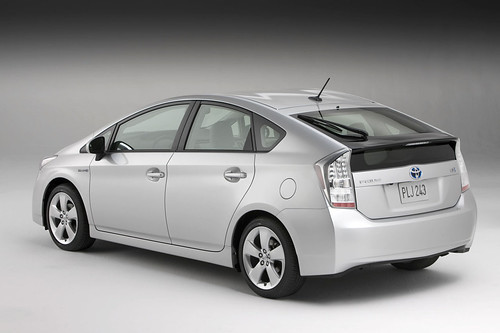In a Sluggish Japan, Prius Sales Boom
(Source: Time & Green Car Congress)

Orders in Japan for Toyota’s new Prius hybrid have topped a booming 110,000, a major dealership chain said Saturday, in what is turning out to be a rare bright spot in the gloomy auto market.
The third-generation Prius officially rolled out in Japan just two weeks ago. But dealers are already flooded with orders, including some placed weeks in advance, according to the dealership. (See TIME’s photos of General Motors factory-scapes)
Toyota Motor Corp., the world’s biggest automaker, said two weeks ago that it received 80,000 advance orders, and has not updated that number.
But the Toyota Tokyo Corolla dealer said Saturday that nationwide orders at Toyota dealerships in Japan, including those of rivals, have soared to 110,000. Dealers tally their customer orders differently from the way manufacturers do.
But any way you slice it, the Prius is a hit. Toyota has set its monthly sales target for Japan at 10,000 new Prius cars — a figure that should make it the top-selling car in the country.
As the orders stack up, the company looks on track to meet or even surpass its goal and take that crown — an astonishing accomplishment for a hybrid, although the Prius is fighting competition from another new hybrid, Honda Motor Co.’s Insight.
Hybrids are in demand partly because the Japanese government began offering tax exemptions for the cars to encourage their sales earlier this year.
The overall Japanese auto market has been languishing for years, with vehicle sales falling to their lowest level in more than three decades last year. Demand has worsened since the U.S. financial crisis sent this nation into a recession. According to Green Car Congress, the Nikkei estimates that Japan passenger car production in fiscal 2009 will likely decrease to 1979 levels, mostly due to a plunge in exports. The projection, which was compiled based on automakers’ data and interviews with company officials, calls for the eight Japanese passenger car firms to assemble 8.21 million vehicles in the year ending in March 2010, 14% fewer than last year and the second consecutive annual decline, following a 15% fall in fiscal 2008.
